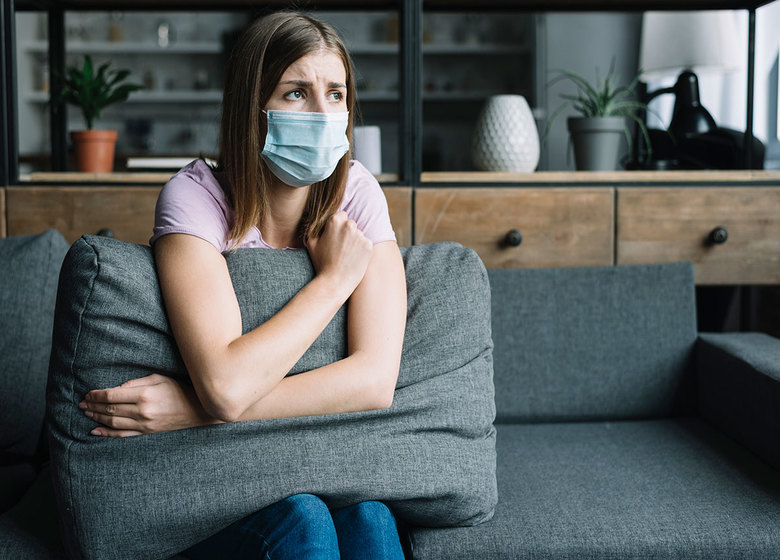If you think of air pollution, you are most probably not conjuring up images of your home or office’s inside. But because we spend so much time indoors— especially in colder weather — it is important for your health to keep the air quality as clean as possible in your home, car, and workplace. And, sadly, we’re bringing most of these pollutants indoors. Scroll down for the tips to deal with indoor pollution.
What is Indoor Air Pollution?
A toxic cocktail of irritants, carcinogens, harmful chemicals, neurotoxins, dust mites, allergens, and bacteria in the air you breathe inside your house. All this comes from using items at home on a daily basis. Indoor air pollution is named when the air inside your home is polluted with such particles. In serious cases, these may cause huge health problems and developmental disorders, particularly in children. This can affect people of all ages. Here are some common air pollutants in the indoor environment:
- Mold Growth
- Increase in Carbon Monoxide
- Suspended Particulate Matter
- Volatile Organic Compounds (VOCs)
Sources Of Indoor Air Pollution
1. Cigarettes
The smoke that smokers exhale outside can also contaminate the interior of a house nearby. The smoke’s nicotine is a popular carcinogen.
2. Furniture
Most of the furniture you buy today are coated with fire retardants, in order to avoid fires. In fact, fire retardants are compounds that have proved extremely harmless in preventing fires as well. Generally, pentabrominated diphenyl ether and Tris chlorinated (TDCCP) are very toxic and cause toxic gasses and suckering when burned, which cause infection and even death. These carcinogens are extremely toxic.
3. Air Fresheners
Today, many air fresheners offer a number of ethylene-based glycol ethers on the market. Such components cause both neurological and blood-related problems. Air fresheners also contain phthalates, a baby’s endocrine disruptor that affects hormone secretion and growth.
4. House Paint
Most of the regular house paints found on the market have lead in it. Lead is a toxin that causes irreversible damage on a long-term, day-to-day basis when exposed to it. In fact, the paints can contain VOCs, producing fumes that may make the situation worse.
5. Carpets
Carpets are common household products that contain a number of harmful pollutants. These contain a variety of certified carcinogens, Volatile Organic Compounds or VOCs such as toluene, formaldehyde, and benzene. Carpets also attract dust mites that were found to be a source of asthma in some studies.
6. Candles
The candles are mainly made of paraffin wax, which is then treated with chlorine to make it white. Paraffin is an oil by-product that releases on lighting benzene and toluene, which are harmful carcinogens. Add to this dioxin, acrolein-causing lung cancer, artificial colors, and synthetic fragrances, and you’ve got a ticking time bomb with respiratory diseases!
Effects of Indoor Air Pollution
Indoor air pollution results can be life-threatening. Children and the elderly are more likely to experience the after-effects of indoor air pollution.
- When you have asbestos in your home it can cause you some serious health problems, including lung cancer, asbestosis, mesothelioma, and many other cancers.
- When pollutants like animal dander, dust mites or other bacteria enter the home, some serious effects will also result from them. You can begin to experience symptoms of asthma, inflammation of the lungs, pneumonia, and other infectious diseases.
- Tobacco smoke causes severe respiratory discomfort, cough, bronchitis, emphysema, heart disease and lung cancer to be encountered by individuals.
- When lead is found in the house, it may cause damage to the brain and nerves, kidney failure, anemia, and cardiovascular system defective.
- Chemicals such as those used for certain cleaning agents and paints can cause you to lose coordination, damage to the liver, brain, kidney and a variety of cancers.
Tips To Deal With Indoor Pollution
Here are some of the tips to deal with indoor pollution to make sure that you can keep the air pollution in your homes in check:
- Smoking is one of the most common types of emissions from indoor air. It is best to stop smoking and establish a home tobacco control zone. Smoking is one of the main causes of cancer. Lung cancer is the most common type of smoking-induced cancer.
- Make sure you check any of your cleaning supplies for ingredients to make sure they are environmentally friendly. Do your homework on what is considered a dangerous product. You can also find an online cleaning list that is environmentally friendly, so you know exactly what to order.
- Avoid using gas stoves and certain types of space heaters in your house. They release harmful chemicals that may pose a risk to human health.
- Inspect your home for any mold, radon, or other harmful chemicals or bacteria that may be found in your house.
- Most of the dust comes from the boots in the house. Keep out of each room a wide mat that will reduce the amount of dirt and other contaminants coming into your house.
Indoor air pollution, as you can see, is very real and just as dangerous as outdoor air pollution. Many of the things we do or do at home will gradually lead to indoor air pollution, causing all sorts of health problems. Use the above tips to deal with indoor air pollution to understand how indoor air pollution works and how, with some simple steps, you can purify the air in your home.
Also Read: Vastu Tips For Money Plant













